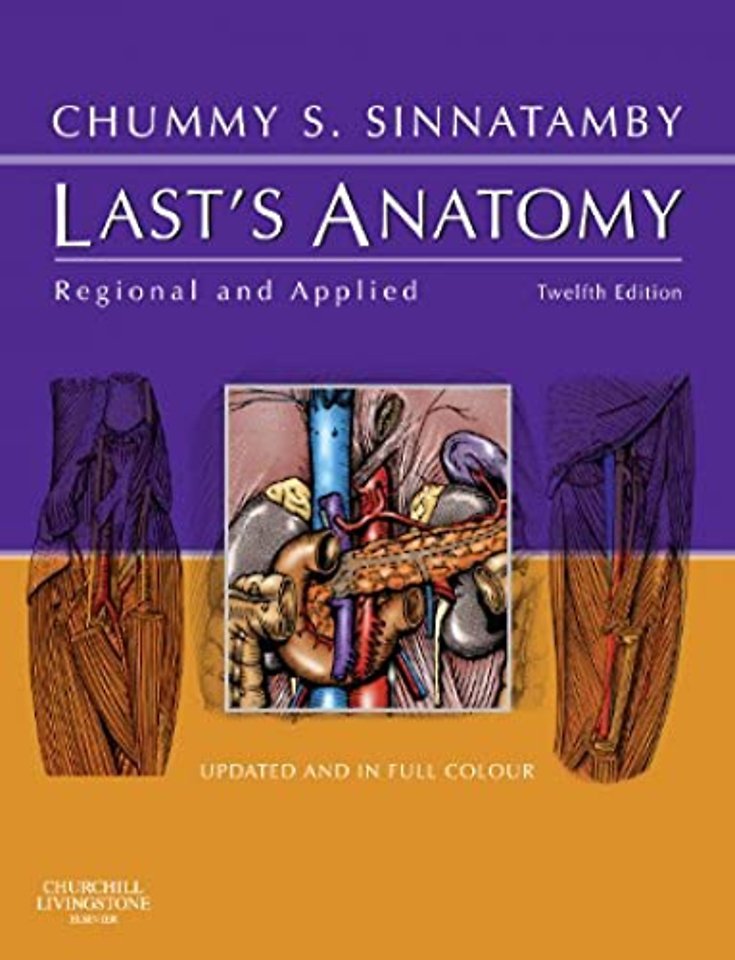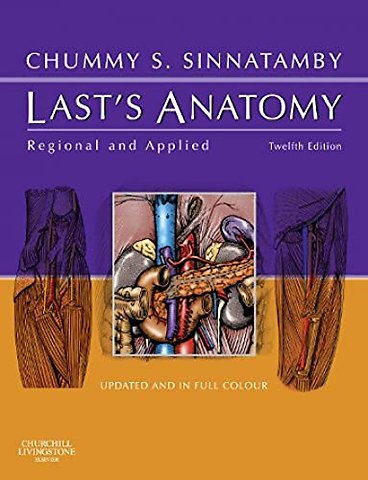<p>CHAPTER 1 </p> <p>Introduction to regional anatomy </p> <p>1. Tissues and structures 1</p> <p>2. Nervous system</p> <p>3. Embryology</p> <p>4. Anatomy of the child</p> <p>CHAPTER 2 </p> <p>Upper limb </p> <p>1. Pectoral girdle</p> <p>2. Shoulder</p> <p>3. Axilla</p> <p>4. Breast</p> <p>5. Anterior compartment of the arm</p> <p>6. Posterior compartment of the arm</p> <p>7. Anterior compartment of the forearm</p> <p>8. Posterior compartment of the forearm</p> <p>9. Wrist and hand</p> <p>10. Summary of upper limb innervation</p> <p>11. Summary of upper limb nerve injuries</p> <p>12. Osteology of the upper limb</p> <p>CHAPTER 3 </p> <p>Lower limb </p> <p>1. Anterior compartment of the thigh</p> <p>2. Medial compartment of the thigh</p> <p>3. Gluteal region and hip joint</p> <p>4. Posterior compartment of the thigh</p> <p>5. Popliteal fossa and knee joint</p> <p>6. Anterior compartment of the leg</p> <p>7. Dorsum of the foot</p> <p>8. Lateral compartment of the leg</p> <p>9. Posterior compartment of the leg</p> <p>10. Sole of the foot</p> <p>11. Ankle and foot joints</p> <p>12. Summary of lower limb innervation</p> <p>13. Summary of lower limb nerve injuries</p> <p>14. Osteology of the lower limb</p> <p>CHAPTER 4 </p> <p>Thorax </p> <p>1. Body wall</p> <p>2. Thoracic wall and diaphragm</p> <p>3. Thoracic cavity</p> <p>4. Superior mediastinum</p> <p>5. Anterior mediastinum</p> <p>6. Middle mediastinum and heart</p> <p>7. Posterior mediastinum</p> <p>8. Pleura</p> <p>9. Lungs</p> <p>10. Osteology of the thorax</p> <p>CHAPTER 5 </p> <p>Abdomen </p> <p>1. Anterior abdominal wall</p> <p>2. Abdominal cavity</p> <p>3. Peritoneum</p> <p>4. Development of the gut</p> <p>5. Vessels and nerves of the gut</p> <p>6. Gastrointestinal tract</p> <p>7. Liver and biliary tract</p> <p>8. Pancreas</p> <p>9. Spleen</p> <p>10. Posterior abdominal wall</p> <p>11. Kidneys, ureters and suprarenal glands</p> <p>12. Pelvic cavity</p> <p>13. Rectum</p> <p>14. Urinary bladder and ureters in the pelvis</p> <p>15. Male internal genital organs</p> <p>16. Female internal genital organs and urethra</p> <p>17. Pelvic vessels and nerves</p> <p>18. Perineum</p> <p>19. Male urogenital region</p> <p>20. Female urogenital region</p> <p>21. Pelvic joints and ligaments</p> <p>22. Summary of lumbar and sacral plexuses</p> <p>CHAPTER 6 </p> <p>Head and neck and spine </p> <p>1. General topography of the neck</p> <p>2. Triangles of the neck</p> <p>3. Prevertebral region</p> <p>4. Root of the neck</p> <p>5. Face</p> <p>6. Scalp</p> <p>7. Parotid region</p> <p>8. Infratemporal region</p> <p>9. Pterygopalatine fossa</p> <p>10. Nose and paranasal sinuses</p> <p>11. Mouth and hard palate</p> <p>12. Pharynx and soft palate</p> <p>13. Larynx</p> <p>14. Orbit and eye</p> <p>15. Lymph drainage of head and neck</p> <p>16. Temporomandibular joint</p> <p>17. Ear</p> <p>18. Vertebral column</p> <p>19. Osteology of vertebrae</p> <p>20. Cranial cavity and meninges</p> <p>21. Cranial fossae</p> <p>22. Vertebral canal</p> <p>CHAPTER 7 </p> <p>Central nervous system </p> <p>1. Forebrain</p> <p>2. Brainstem</p> <p>3. Cerebellum</p> <p>4. Spinal cord</p> <p>5. Development of the spinal cord and brainstem nuclei</p> <p>6. Summary of cranial nerves</p> <p>7. Summary of cranial nerve lesions</p> <p>CHAPTER 8 </p> <p>Osteology of the skull and hyoid bone </p> <p>1. Skull</p> <p>2. Hyoid bone</p> <p>Biographical notes</p> <p>Index</p>

